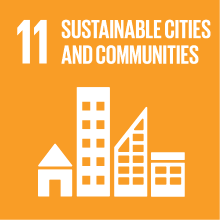PRINCIPLES OF ARCHAEOLOGICAL MUSEOLOGY
- Academic year
- 2021/2022 Syllabus of previous years
- Official course title
- LINEAMENTI DI MUSEOLOGIA ARCHEOLOGICA
- Course code
- FM0447 (AF:353664 AR:190482)
- Teaching language
- Italian
- Modality
- Blended (on campus and online classes)
- ECTS credits
- 6
- Degree level
- Master's Degree Programme (DM270)
- Academic Discipline
- L-ANT/06
- Period
- 1st Semester
- Where
- VENEZIA
- Moodle
- Go to Moodle page
Contribution of the course to the overall degree programme goals
At first will be considered the structure of the cultural heritage in Italy, in which museums and archaeological areas are involved, then different ways of explaining archaeological data and discoveries. It’s important to be more attractive to improve the knowledge of our cultural heritage; in this way it’s important to use news methodologies and technologies.
Expected learning outcomes
- To know basic legislation and laws for the management of the cultural heritage
- To Know a topical terminology
- To Know main theoretical principles of public communication, how to manage shows and exhibitions and know new technologies
- To know main museums and archaeological contexts and areas in the Regione Veneto and in the nearest areas
2. Ability to apply knowledge and understanding
- To be able to employ basic legislation and laws for the management of the cultural heritage
- To be able to use technical terminology
- To be able to organizesimple shows and exhibitions
- To be able to analyze examples of museums and arhaeological contexts and areas mainly in our region
3. Judgment skills
- To be able to judge and argue hypothesis about museums and archaeological areas and their management
4. Communication skills
- To be able to take an archaeological guide in un museum or in an archaeological area
- To be able to compare themselves with colleagues and tutor, even on.line
5. Learning ability
- To be able to take notes and to share them with colleagues, even on line
- To be able to consult bibliographic references even with a critical point of view
- To be able to share informations and ideas on the on.line platform and in the forum
Pre-requirements
Contents
In this academic year we'll try to point out some reflections about the difficult situation caused by Covid-19 in 2020 and the solutions that Museums and Public Cultural Institutes suddenly developed.
Some case studies are showed in order to stimulate reflection on new ways to communicate our heritage, today particularly sought-after in the museum institutions, to trigger an interactive and dynamic reflection of case studies, in both positive and negative.
Referral texts
- I. Colpo, A. Di Mauro, E.F. Ghedini, Standard nazionali di qualità per le professioni nei MUsei, Antenor Quaderni 18, Roma 2010.
- Archeomusei. Musei Archeologici in Italia 2001-2011, Atti del Convegno, Adria 21-22 giugno 2012, Firenze 2013.
- A. De Pascale, Archeologia e divulgazione: limiti, confini, orizzonti, in M. Cupitò, M. Vidale. A. Angelini, Beyond Limits. Studi in onore di Giovanni Leonardi, Antenor Quaderni 39, Padova 2017, pp. 725-735.
- A.C. Cimoli, M.C. Ciaccheri, N. Moolhuijsen (a cura di). Senza titolo. Le metafore della didascalia, 2021.
Letture integrative:
- Comunicare l'archeologia: ricerca e interazione in dieci anni di didattica, Atti della 11a giornata regionale di studio sulla didattica museale, Este, 24 settembre 2007, Venezia 2008.
- Oltre il silenzio delle cose. Professionisti in dialogo per la comunicazione educativa nei musei, Atti della 15a giornata regionale di studio sulla didattica museale, Montebelluna (TV), 14 novembre 2011, Venezia 2012.
Per i non frequentanti anche alcuni saggi da concordare con il docente da:
- S. Roman, Il museo: confine tra le culture del passato e quelle del presente, in M. Cupitò, M. Vidale. A. Angelini, Beyond Limits. Studi in onore di Giovanni Leonardi, Antenor Quaderni 39, Padova 2017, pp. 771-777..
- C. Dal Maso, F. Ripanti, Archeostorie. Manuale non convenzionale di archeologia vissuta, Milano 2015.
- Oltre il silenzio delle cose. Professionisti in dialogo per la comunicazione educativa nei musei, Atti della 15a giornata regionale di studio sulla didattica museale, Montebelluna (TV), 14 novembre 2011, Venezia 2012.
Assessment methods
During the period of the course the student is invited to perform exercises or to interact on a forum on the e-learning platform. These activities combine to form the final evaluation that will be completed with a final exam. The exam consists of an oral test of about 20 minutes which includes an interview with the teacher. In particular, the exam aims to verify that the student has acquired the concepts presented during the lessons, is familiar with the theoretical and practical problems and is able to express critical and conscious judgments on different situations with adequate motivations, even with the exposure of cases of personal experience.
Sufficient proof must prove to have an acceptable knowledge of the basic problems with the adoption of some specific terms, from the institutional framework to the more general principles of communication and the modalities of valorisation of the patrimony.
A high-valued test must demonstrate that the student has achieved good specific terminology and that he (or she) is able to link and compare different situations by emphasizing affinity and similarity in a critical way.
Type of exam
Teaching methods
On.line lessons
Papers and different typology of exercises on.line
Seminars
Further information
2030 Agenda for Sustainable Development Goals
This subject deals with topics related to the macro-area "Cities, infrastructure and social capital" and contributes to the achievement of one or more goals of U. N. Agenda for Sustainable Development


